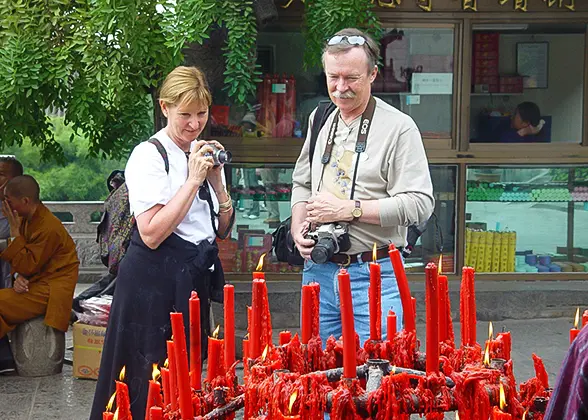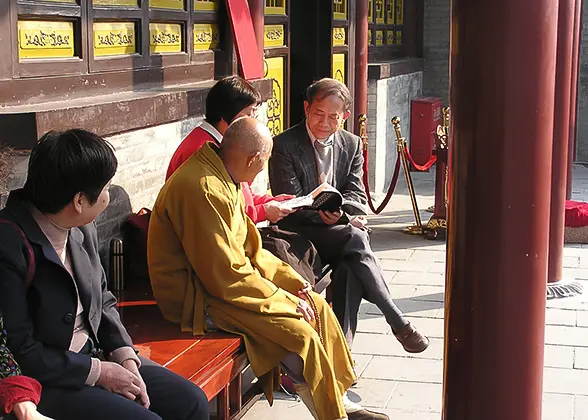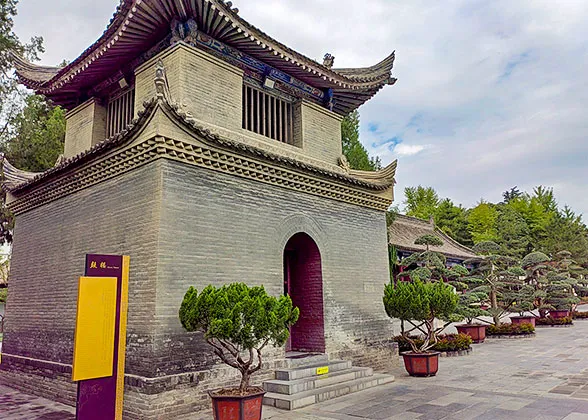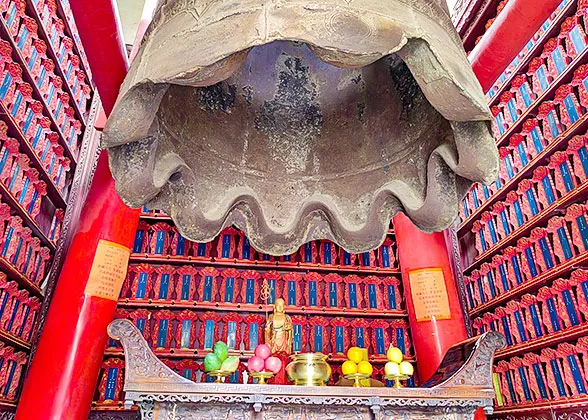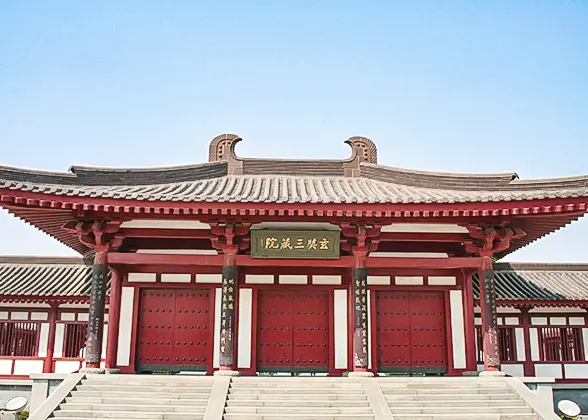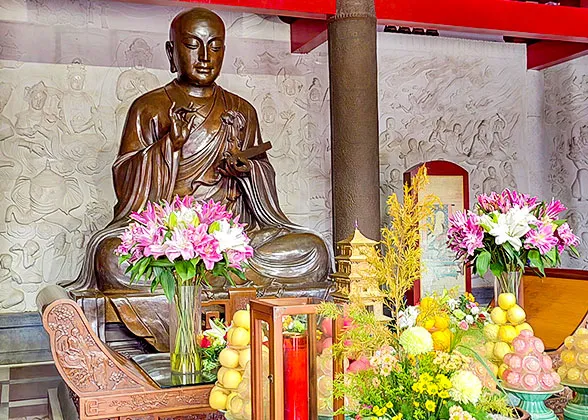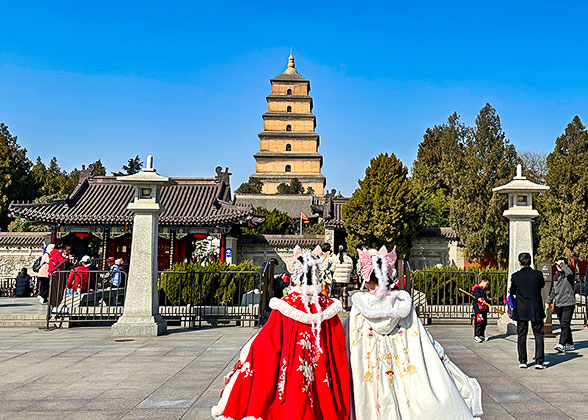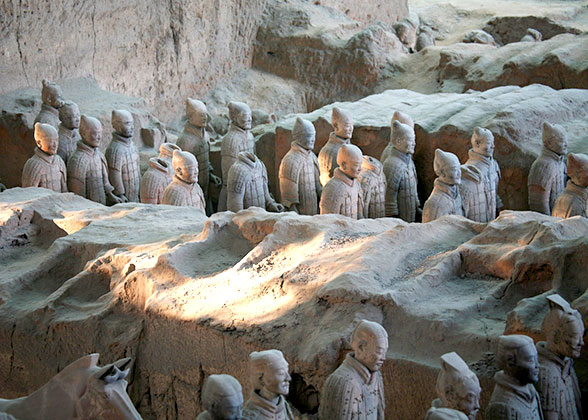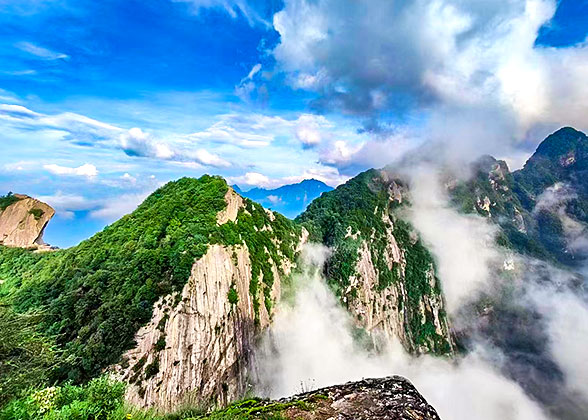Da Ci'en Temple
Located about 4 kilometers (2.5 miles) south to city center of Xi’an, the Da Ci’en Temple is one of renowned Buddhist temples in China, where the landmark of Xi’an, Giant Wild Goose Pagoda, is situated. Originally built in 648 of Tang Dynasty (618-907), the Da Ci'en Temple at that time was the most splendid imperial temple in ancient Chang’an, today’s Xi’an.
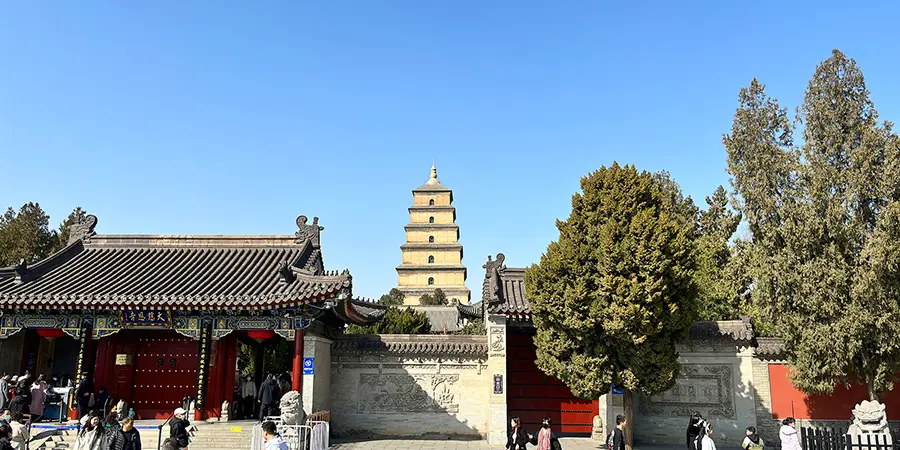 |
| Da Ci'en Temple with Giant Wild Goose Pagoda inside |
1370-year-old Famous Imperial and Buddhist Temple
In 648, the crown prince Li Zhi of Tang Dynasty ordered to build a temple to commemorate his mother who had passed away, and also repay the benevolence of this loving person. That’s why the imperial temple got its name of “Ci’en” meaning mercy and kindness.
The prince further appointed the prominent monk Xuanzang as the first abbot of the temple. Xuanzang once spent 17 years seeking out Buddhist scriptures, during which he studied Buddhist teachings in India, and brought back plenty of Buddhist sutras, statues, and relics such as Sariras. The Da Ci’en Temple hereupon became a famous site for Buddhist sutra translation by Xuanzang and his disciples.
Over the years, the Da Ci’en Temple has been damaged during wars and the temple we see today is renovated on the basis of its west courtyard about 600 years ago. Surrounded by lush green belts and ancient trees, the tranquil Da Ci’en Temple has Bell Tower, Drum Tower, Mahavira Hall, Tusita Hall, Giant Wild Goose Pagoda, and Xuanzang Sanzang Hall along its central axis.
|
|
Entrance Area with Bell and Drum Towers
There are two squares on the both north and south sides of the Da Ci’en Temple. The entrance of the temple faces to the south, and a giant bronze statue of Xuanzang towers in front of the square. Right ahead the temple gate are two large stone lions of Qing Dynasty (1644-1911) on both sides. The male one in the east plays with a silk ball, and the female lion in the west enjoys two baby lions' company. Entering the gate, visitors can find two towers. One is the Bell Tower in the east, where hangs an iron bell cast in Ming Dynasty whose striking sound can be heard from far away. The other is Drum Tower in the west, and the drum within was chimed to tell time and also remind the start of important activities.
|
|
Mahavira Hall
Mahavira Hall is right behind the entrance, so visitors can easily see it. The hall is situated on the central platform of the temple. Inside the hall three different Buddhist statues are enshrined in the middle, namely Vairocana, Mahavairocana and Sakyamuni. In the east side is the statue of Kasyapa, one of students of Sakyamuni, and in the west side is the statue of Ananda, Sakyamuni’s cousin. They are surrounded by 18 arhats on both sides.
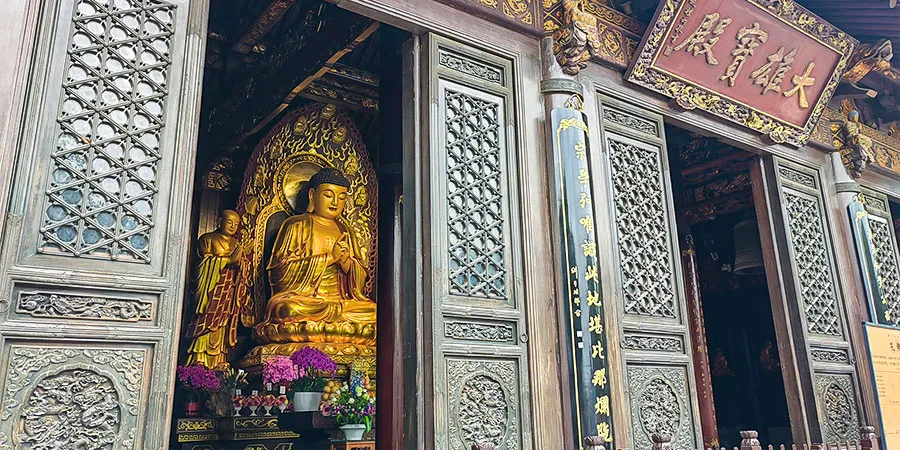
Tusita Hall
At the very rear of the Mahavira Hall stands the Tusita Hall, where a copper statue of Maitreya is enshrined. According to the description in Buddhist scriptures, as the future Buddha who lives in Tusita, Maitreya will show up in the real world when the time is appropriate. In front of this hall, you can find two towering oriental arborvitae trees with a history of more than 320 years.
Landmark Building - Giant Wild Goose Pagoda
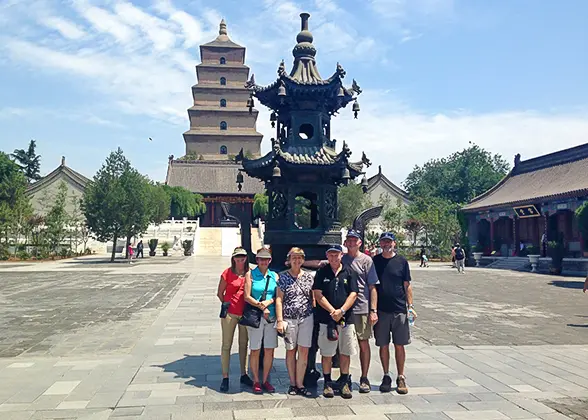 |
Xuanzang Sanzang Hall
In Xuanzang Sanzang Hall, which is the largest of its kind currently, enshrine the Buddhist relics of Xuanzang’s parietal bone and his bronze sitting statue. The hall consists of three parts. The Light Hall in the west shows how Xuanzang attended a school and learned about Buddhism. The Prajna Hall in the east presents how he was warmly welcomed after coming back from India, spread and promoted the Buddhist doctrine till he was gone. In the central Universal Enlightenment Hall, large delicate murals record the big events of his lifetime. Bronze inscriptions, wood and stone carvings are displayed in the hall. In addition, there is a basement in the northwest corner of the hall, where stores the original palm leaf manuscript brought from India by him.
|
|
Pagoda Forest
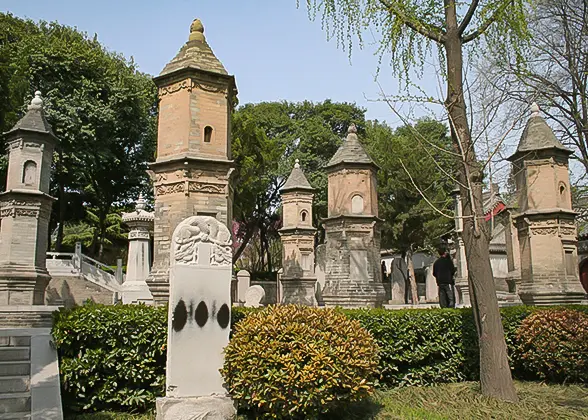 |
Da Ci’en Temple Travel Tips
1. There is a peony garden in the west of the temple. Every April is the blooming season, and it’s wonderful to take photos with the flowers and also the pagoda behind.
2. In the temple, many small-sized joyful Buddha statues with various gestures are set on the lawn.
Da Ci’en Temple Admission Fee and Opening Hours
| Admission Fee | Adult: CNY 10 Kids under 1.2 m (3.9 ft) or no more than 6 years old: Free Extra Fee for ascending the Giant Wild Goose Pagoda: CNY 25 |
|---|---|
| Opening Hours | 08:30-17:40 from October 15 to February 28/29, and 08:30-18:00 from March 1 to October 14. Ticket selling stops one hour before the closing time. |
How to Get to Da Ci’en Temple
Take Line 3 or Line 4, get off at Giant Wild Goose Pagoda Station, get out from Exit B, and walk southward for about 13 minutes to find the entrance to the temple.
Take Bus No. 21, 22, 23, 24, 44, 189, 224, 242, 271, 307, 408, 500, 606, 609, or Tourist Line 9, get off at East Intersection of Yantaxi Road Station, and walk eastward for about 9 minutes to get to the temple’s entrance.
Xi'an Bus / Metro Search
Nearby Attractions
Recommended Tours
- Last updated on Sep. 18, 2025 by Alex Jin -
